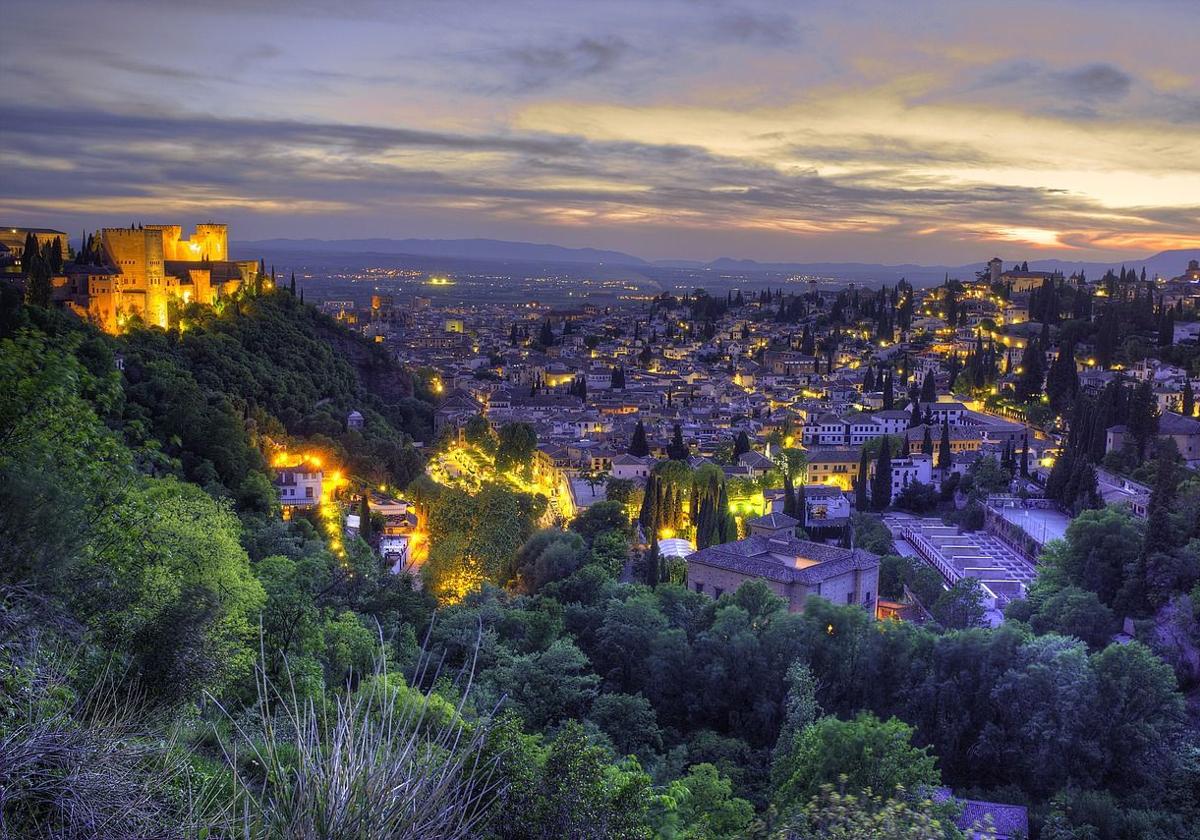This is the province in the south of Spain where the number of foreign residents has increased fourfold in 20 years
Access to work, Brexit, the financial crisis and the pandemic have all had an influence on the data
Juanjo Cerero
Granada
Monday, 29 April 2024, 11:12
There are more and more people of international origin living in Granada. The foreign-born population registered in the province is more than four times the number registered this time twenty years ago according to the historical series of continuous census data made available to the public by Spain's INE national statistics institute.
In 2002, for example, this group was made up of 15,857 people, while in 2022, the last year for which there is confirmed data, that figure climbed to 69,157, i.e. more than three times as many, or 336 per cent.
The monitoring of the data shows how the variation in the political and economic situation has been a significant driver of the changes observed in these two decades. The first major upturn in the number of registered foreigners occurred between 2002 and 2005, the years immediately after the introduction of the euro, the incorporation of up to 12 new countries into the European Union and the signing and ratification of treaties such as those of Nice and Lisbon.
During those years, year-on-year increases of more than 40 per cent were seen and the trend continued to rise until 2008, when the effect of the economic crisis led many people who had come to Grenada in search of a better life to return to their countries of origin.
The trend then reversed, and year-on-year variations were negative between 2012 and 2017, by when the United Kingdom was already fully immersed in the Brexit debate with the referendum on remaining in the EU taking place in 2016.
By 2018, this political context, coupled with the slow but steady improvement in economic data, led to a return to positive growth in the number of foreigners in the province, a trend that progressively gained strength until 2020, when the effect of the pandemic slowed down the numbers.
Although the figures have not returned to negative figures, they are more limited; in 2022, for example, there were 2.65% more foreign-born people living in Granada than in the previous year, while in 2018 and 2019 the figure had remained above six points in both cases.
In any case, the overall calculation leaves a clear interpretation: an increase in foreigners in the overall population of Granada. Whereas in 2002 they represented just 1.94% of the total, today they represent 7.5%, i.e. approximately one in every 13 inhabitants.
Work and holidays
A break down by municipality shows that growth has been quite uneven among the different areas of Granada, driven mainly by two different types of migratory processes. One, for reasons of work, with people moving to places with strong seasonal agricultural production, for example.
Another shows people coming for holidays, leisure or retirement, with the proliferation of second homes in areas such as the Costa Tropical or the Alpujarra, where it is not uncommon to find foreign families in search of an alternative lifestyle.
With respect to 2003 - the first year for which the INE offers data broken down by localities - among the municipalities where the foreign population has increased the most over the total census in absolute terms are Cástaras (+32%), Jete (+29%), Gualchos (+27%), Albuñol (+26%) and Torrenueva Costa (+22%); with the exception of the first which is located in the Alpujarra, this 'top five' is made up almost exclusively of coastal municipalities.
In sixth place is Zafarraya in Alhama de Granada, an area that offers a lot of agricultural work. In the case of Granada city the foreign population increased by 4.5%.
In 2022 as many as one in four of the province's municipalities, 45 out of 174, had at least one foreign inhabitant for every ten. Once again, the highest percentages are recorded mainly among municipalities with access to the coast and in the Alpujarra, where depopulation among Spanish people has had an influence.
The first positions are occupied by Polopos, Albuñol and Gualchos, all of which are on the Costa Tropical, and where at least one out of every three registered inhabitants was born outside Spain. The Alpujarra is represented by towns such as Cástaras, Carataunas, Órgiva and Cáñar; in all of them, foreign residents account for more than 25% of the total.
There are only four municipalities in the whole province where foreign residents account for less than 1% of the total. These are Torre-Cardela, Alicún de Ortega, Gobernador and Montejícar. There are 11 population centres in which there are fewer than ten inhabitants of foreign origin such as Guadix or Los Montes, Morelábor, Albuñán, Alamedilla, Beas de Guadix and Dehesas de Guadix, among others.
Morocco, Bolivia and Colombia, the capital's largest number of migrants
According to the most recent data from Spain's INE national statistics institute, a total of 18,125 people born abroad are registered in the city of Granada, which represents 7.9% of the total population of the provincial capital. Of these, the most numerous communities are those of citizens with origins in countries such as Morocco, Bolivia and Colombia. The presence of migrants from Latin America is by far the most significant, with Argentina and Venezuela completing the top five, while in sixth place is the first of the African countries, Senegal.
